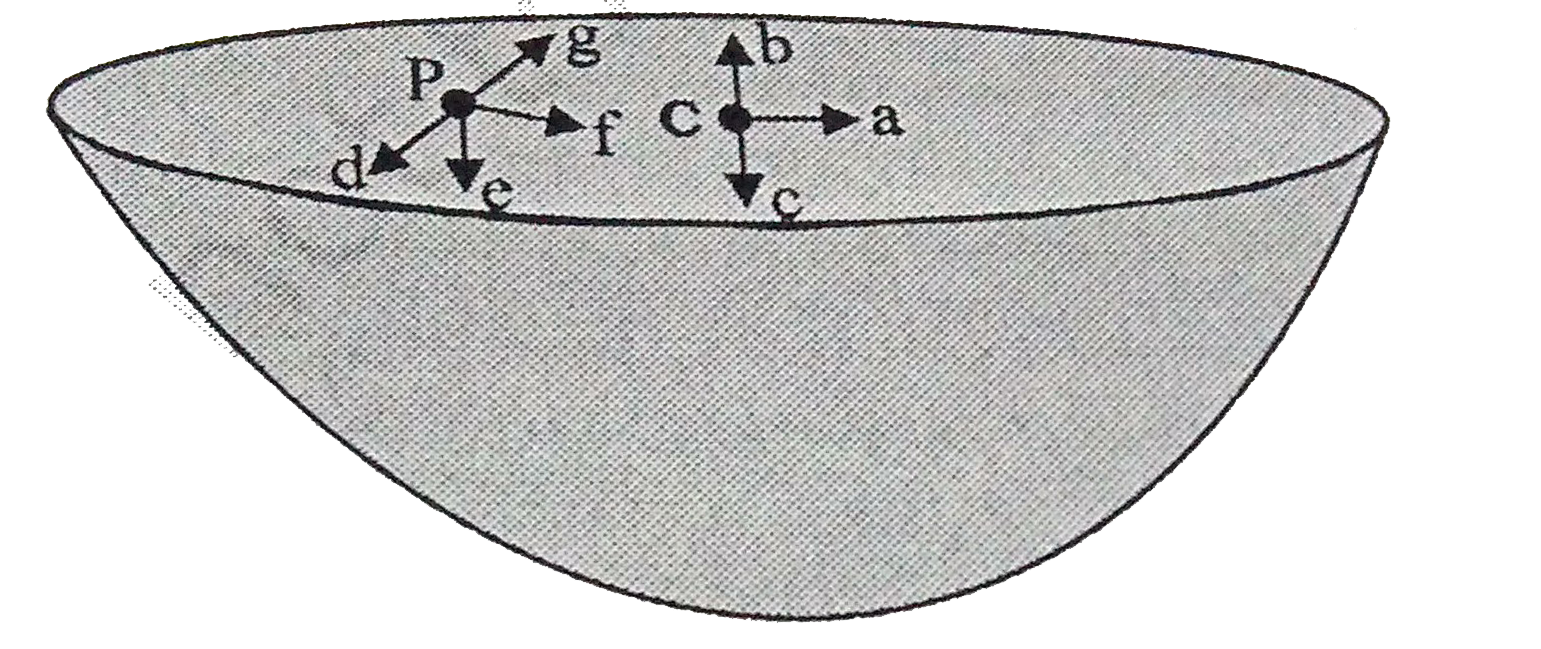EXERCISE from NCERT PHYSICS(HINGLISH) GRAVITATION for Class 11
| Class 11 | PHYSICS |
| Chapter | GRAVITATION |
| NCERT PHYSICS(HINGLISH) | EXERCISE |
| Medium | English |
| Academic Year | 2023-2024 |
Question 1
Answer the following: (a) You can shield a charge from electrical forces by putting it inside a hollow conductor. Can you shield a body from the gravitational influence of nearby matter by putting it inside a hollow sphere or by some other means? (b) An astronaut inside a small spaceship orbiting around the Earth cannot detect gravity. If the space station orbiting around the Earth has a large size, can he hope to detect gravity? (c) If you compare the gravitational force on the Earth due to the Sun to that due to the Moon, you would find that the Sun’s pull is greater than the Moon’s pull. (You can check this yourself using the data available in the succeeding exercises). However, the tidal effect of the Moon’s pull is greater than the tidal effect of Sun. Why?View SolutionQuestion 2
Choose the correct alternative
(a)Acceleration due to gravity increase/decrease with increasing altitude.
(b) Acceleration due to gravity increase/decrease with increasing depth (assume the earth to be a sphere of uniform density).
(c ) Acceleration due to gravity is independent of mass of the earth/mass of the body.
(d) The formula −GMm(1r2−1r1) is more/less accurate than the formula mg(r2−r1) for the difference of potential energy between two points r2 and r1 distance away from the centre of earth.View SolutionQuestion 5
Let us consider that our galaxy consists of 2.5×1011 stars each of one solar mass. How long will this star at a distance of 50,000 light year from the galastic entre take to complete one revolution? Take the diameter of the Milky way to be 105ly.G=6.67×10−11Nm2Kg−2.(1ly=9.46×1015m)View SolutionQuestion 6
Choose the correct alternative :
(a) If the zero of the potential energy is at infinity, the total energy of an orbiting satellite is negative of its kinetic/potential energy.
(b) The energy required to rocket an orbiting satellite out of Earth's gravitational influence is more/less than the energy required to project a sationary object at the same height (as the satellite) out of Earth's influence.View SolutionQuestion 8
A comet orbits the Sun in a highly elliptical orbit. Does the comet have a constant (a) linear speed (b) angular speed (c) angular momentum (d) kinetic energy (e) potential energy (f) total energy throughout its orbit? Neglect any mass loss of the comet when it comes very close to the Sun.View SolutionQuestion 19
A satellite orbits the earth at a height of 400 km, above the surface. How much energy must be expended to rocket the satellite out of the earth's gravitational influence ? Mass of the satellite=200 kg, mass of the earth=6.0×1024kg, radius of the earth=6.4×10(6)m, G=6.67×10−11Nm2Kg−2.View SolutionQuestion 20
Two starts each of one solar mass (=2×1030kg) are approaching each other for a head on collision. When they are a distance 109km. their speeds are negligible. What is the speed with which they collide? The radius of each star is 104km. Assume the stars to remain undistorted until they collide. (Use the known value of G). View SolutionQuestion 21
Two heavy sphere each of mass 100kg and radius 0.10m are placed 1.0m apart on a horizontal table. What is the gravitational field and potential at the mid point of the line joining the centres of the sphere? Is an object placed at that point in equilibrium? If so, is the equilbrium stable or unstable.View SolutionQuestion 22
A geostationary satellite orbits the Earth at a height of nearly 36,000km from the surface of earth. What is the potential due to earth's gravity at the site of this satllite ? (Take the potential energy at infinity to be zero). Mass of the Earth =6.0×1024kg, radius =6400km,G=6.67×10−11Nm2/kg2.View SolutionQuestion 23
A star 2.5 times the mass of the sun and collapsed to a size of 12km rotates with a speed of 1.2 rev. per second. (Extremely compact stars of this kind are known as neutron stars. Certain stellar object called pulsars belong to this category). Will an neutron stars. Certainstellar objects called pulsars belong to this category). will an object placed on its equator remain stuck to its surface due to gravity? (mass of the sun=2×1040kg). View SolutionQuestion 24
A spaceship is stationed on mars. How much energy must be expended on the spaceship to launch it out of this kind are known as neutron stars. Certain steller objects called pulsars belong to this categor). Will an object placed on its equator remain stuck to its surface due to gravity? (mass of the sun=2×1030kg). View SolutionQuestion 25
A rocket is fired fired vertically from the surface of Mars with a speed of 2 Kms−1. If 20% of its initial energy is lost due to martain atmospheric resistance, how far will the rocket go from the surface of Mars before returning to it ? Mass of Mars=6.4×1023Kg, radius of Mars=3395 Km, G=6.67×10−11Nm2Kg−2.View Solution
